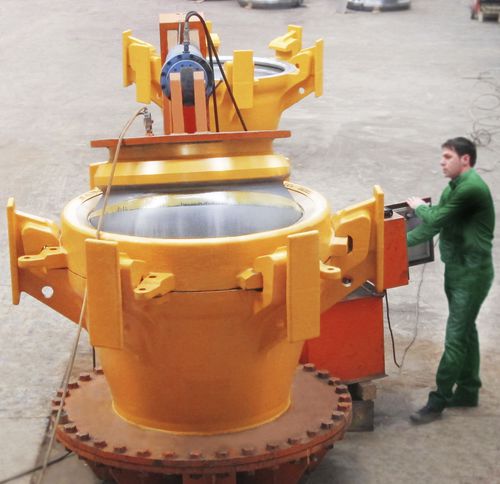DREDGE YARD ball joints are designed by using the latest CAD technologies, production methods and testing facilities World wide.
To provide customer with the best suitable solution and lowest cost , DREDGE YARD ball joints are designed in six different types, giving variations of tilting angle from 15 to 18 degrees and duties from 10 bar to 30 bar.
All dredge ball joints are designed, produced, assembled, tested, painted, greased, packed and transported under close super vision of DREDGE YARD team of engineers and quality control.
DREDGE YARD ball joints are designed, produced and tested under strict ISO and ASTM standards and double tested at third party for verification.
Dredge Ball Joint Benefits:
Easy assembly and dis-assembly
Low maintenance required
Low friction between ball and gland due to grease grooves and polished ball and gland face
Replaceable liners made from wear resistant materials
Quick fix and release of locking
Dredge Ball Joint Quality Control:
Chemical composition test at third party
Mechanical properties test at third party
Measurement test of all dimensions after casting
Ultra sonic testing for 20% of all surfaces
Magnetic particle tests for critical parts
Dye penetrant inspection for critical parts
Measurement test of all dimensions after machining
Surface roughness test for critical surfaces
Hardness test for all parts
Assembly test and interchangeability for all parts
Locking fix and release test for all dredge ball joints
Visual inspection for all parts during and after assembly













